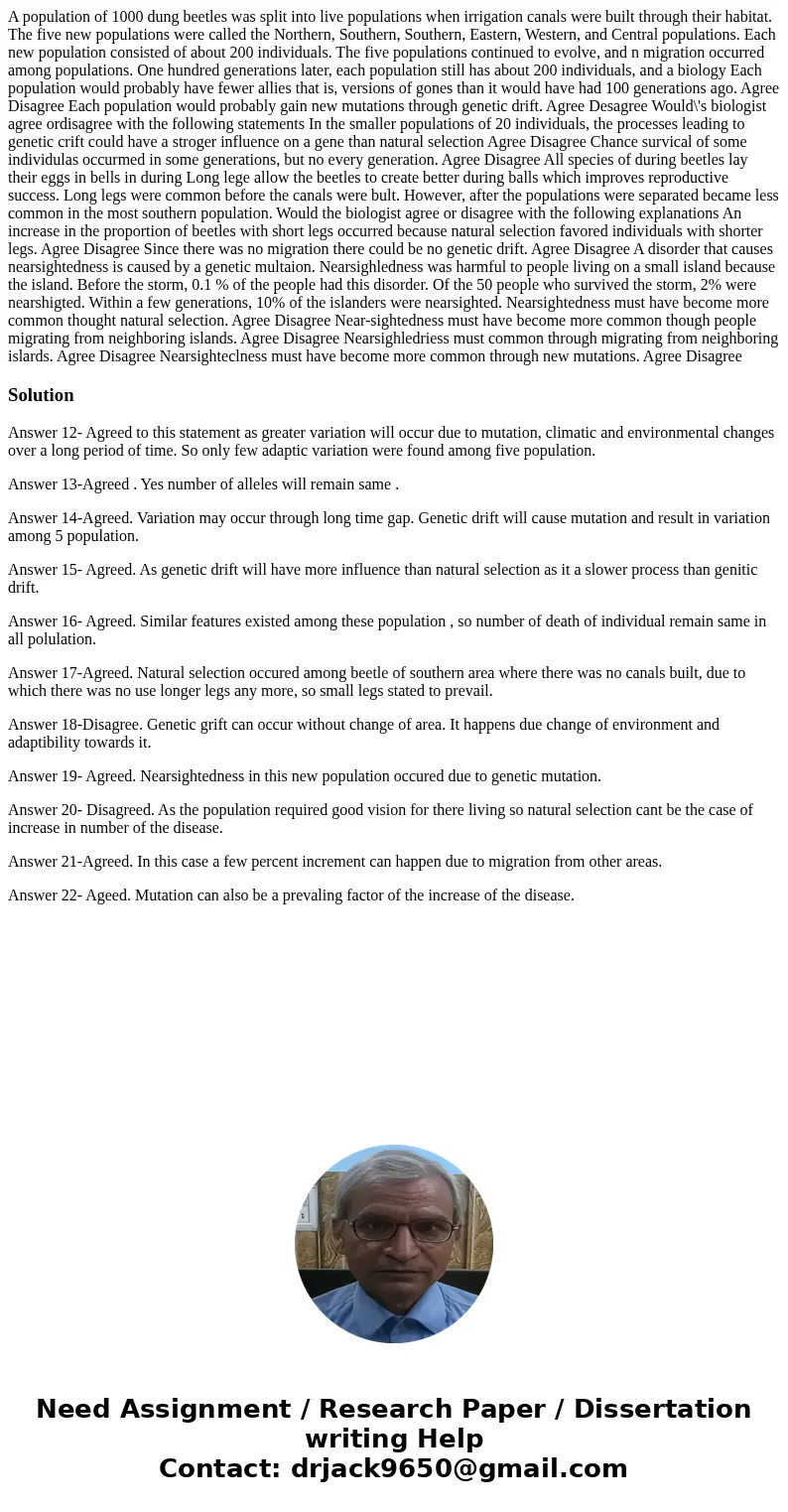A population of 1000 dung beetles was split into live populations when irrigation canals were built through their habitat. The five new populations were called the Northern, Southern, Southern, Eastern, Western, and Central populations. Each new population consisted of about 200 individuals. The five populations continued to evolve, and n migration occurred among populations. One hundred generations later, each population still has about 200 individuals, and a biology Each population would probably have fewer allies that is, versions of gones than it would have had 100 generations ago. Agree Disagree Each population would probably gain new mutations through genetic drift. Agree Desagree Would\'s biologist agree ordisagree with the following statements In the smaller populations of 20 individuals, the processes leading to genetic crift could have a stroger influence on a gene than natural selection Agree Disagree Chance survical of some individulas occurmed in some generations, but no every generation. Agree Disagree All species of during beetles lay their eggs in bells in during Long lege allow the beetles to create better during balls which improves reproductive success. Long legs were common before the canals were bult. However, after the populations were separated became less common in the most southern population. Would the biologist agree or disagree with the following explanations An increase in the proportion of beetles with short legs occurred because natural selection favored individuals with shorter legs. Agree Disagree Since there was no migration there could be no genetic drift. Agree Disagree A disorder that causes nearsightedness is caused by a genetic multaion. Nearsighledness was harmful to people living on a small island because the island. Before the storm, 0.1 % of the people had this disorder. Of the 50 people who survived the storm, 2% were nearshigted. Within a few generations, 10% of the islanders were nearsighted. Nearsightedness must have become more common thought natural selection. Agree Disagree Near-sightedness must have become more common though people migrating from neighboring islands. Agree Disagree Nearsighledriess must common through migrating from neighboring islards. Agree Disagree Nearsighteclness must have become more common through new mutations. Agree Disagree
Answer 12- Agreed to this statement as greater variation will occur due to mutation, climatic and environmental changes over a long period of time. So only few adaptic variation were found among five population.
Answer 13-Agreed . Yes number of alleles will remain same .
Answer 14-Agreed. Variation may occur through long time gap. Genetic drift will cause mutation and result in variation among 5 population.
Answer 15- Agreed. As genetic drift will have more influence than natural selection as it a slower process than genitic drift.
Answer 16- Agreed. Similar features existed among these population , so number of death of individual remain same in all polulation.
Answer 17-Agreed. Natural selection occured among beetle of southern area where there was no canals built, due to which there was no use longer legs any more, so small legs stated to prevail.
Answer 18-Disagree. Genetic grift can occur without change of area. It happens due change of environment and adaptibility towards it.
Answer 19- Agreed. Nearsightedness in this new population occured due to genetic mutation.
Answer 20- Disagreed. As the population required good vision for there living so natural selection cant be the case of increase in number of the disease.
Answer 21-Agreed. In this case a few percent increment can happen due to migration from other areas.
Answer 22- Ageed. Mutation can also be a prevaling factor of the increase of the disease.

 Homework Sourse
Homework Sourse